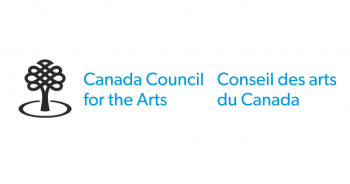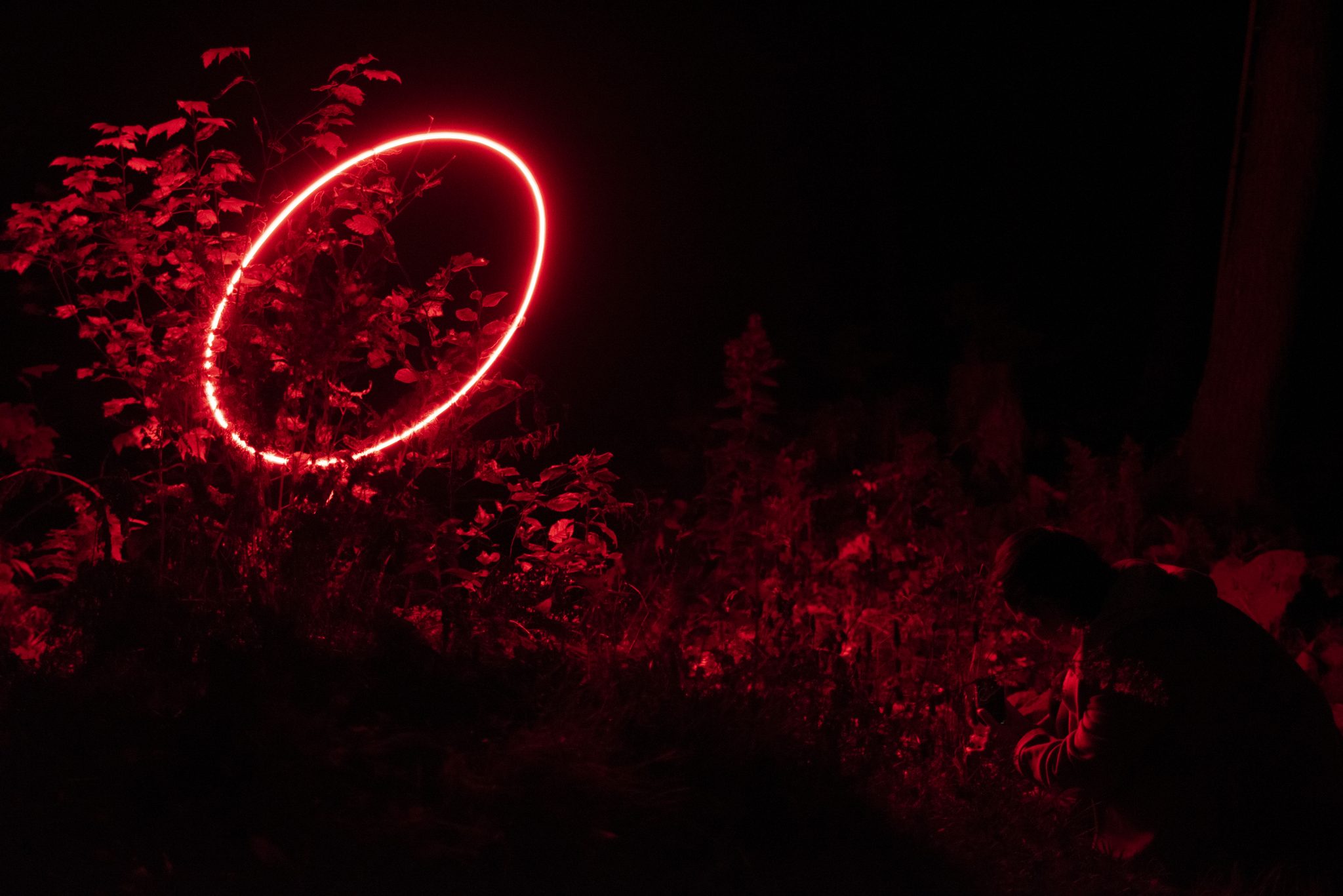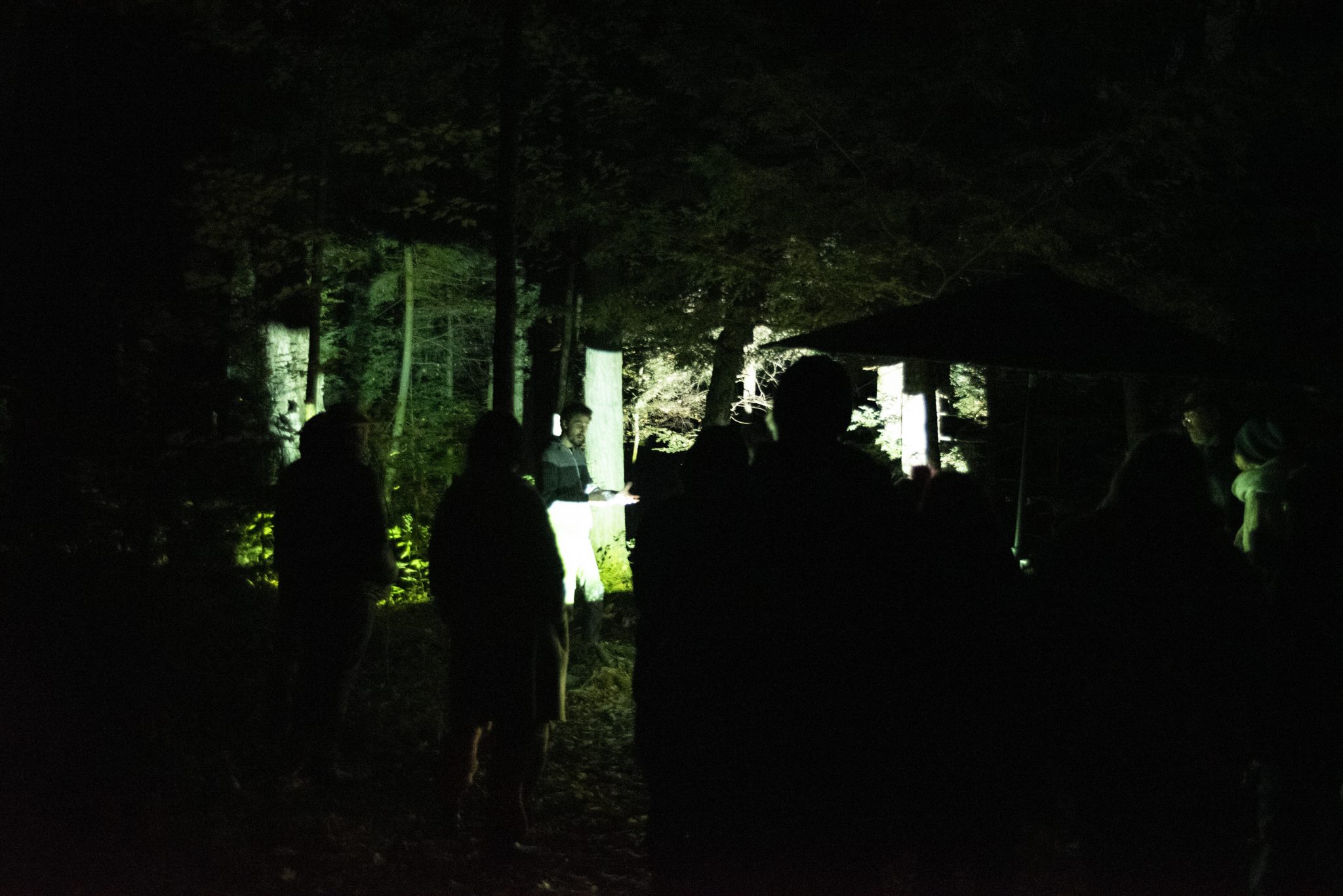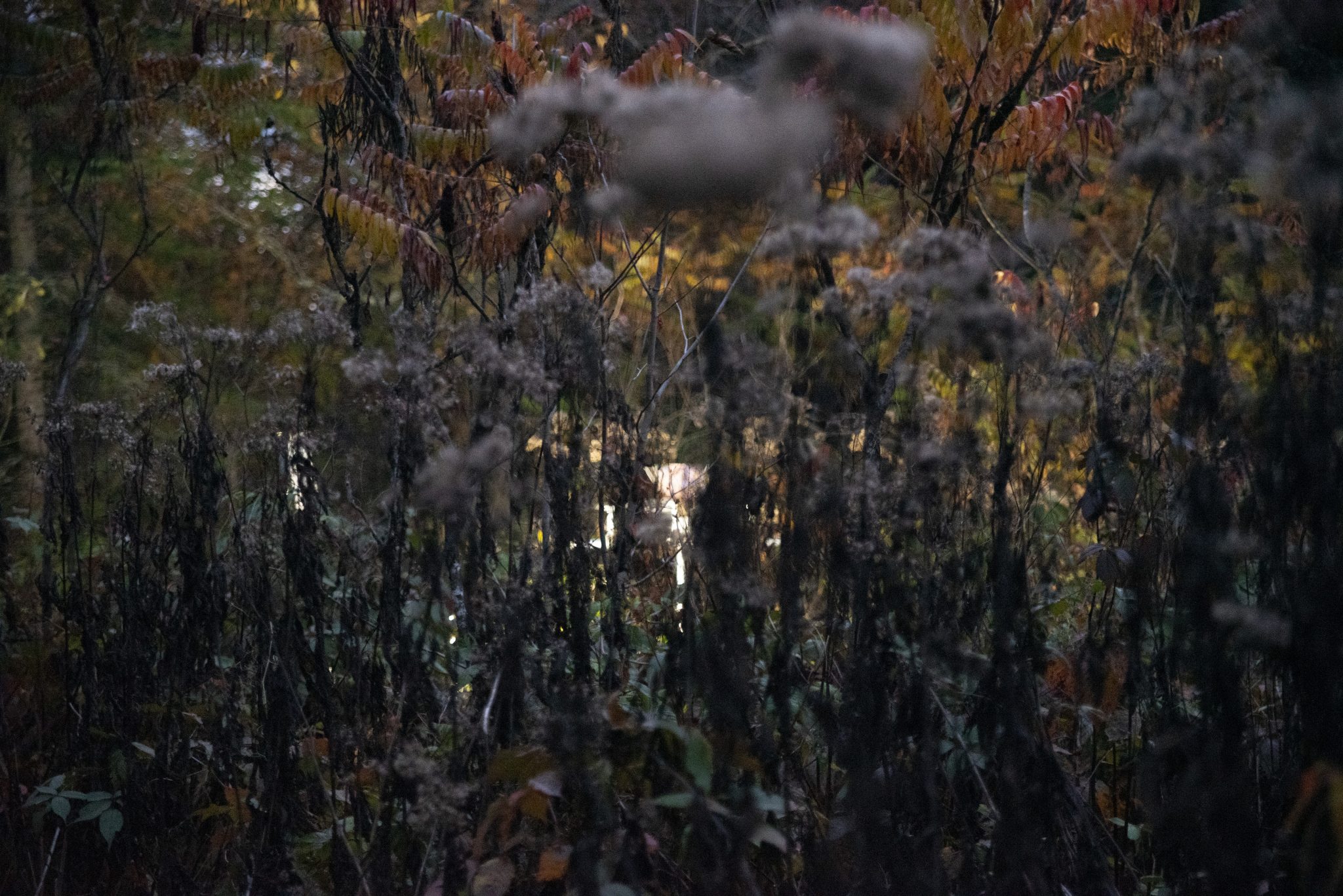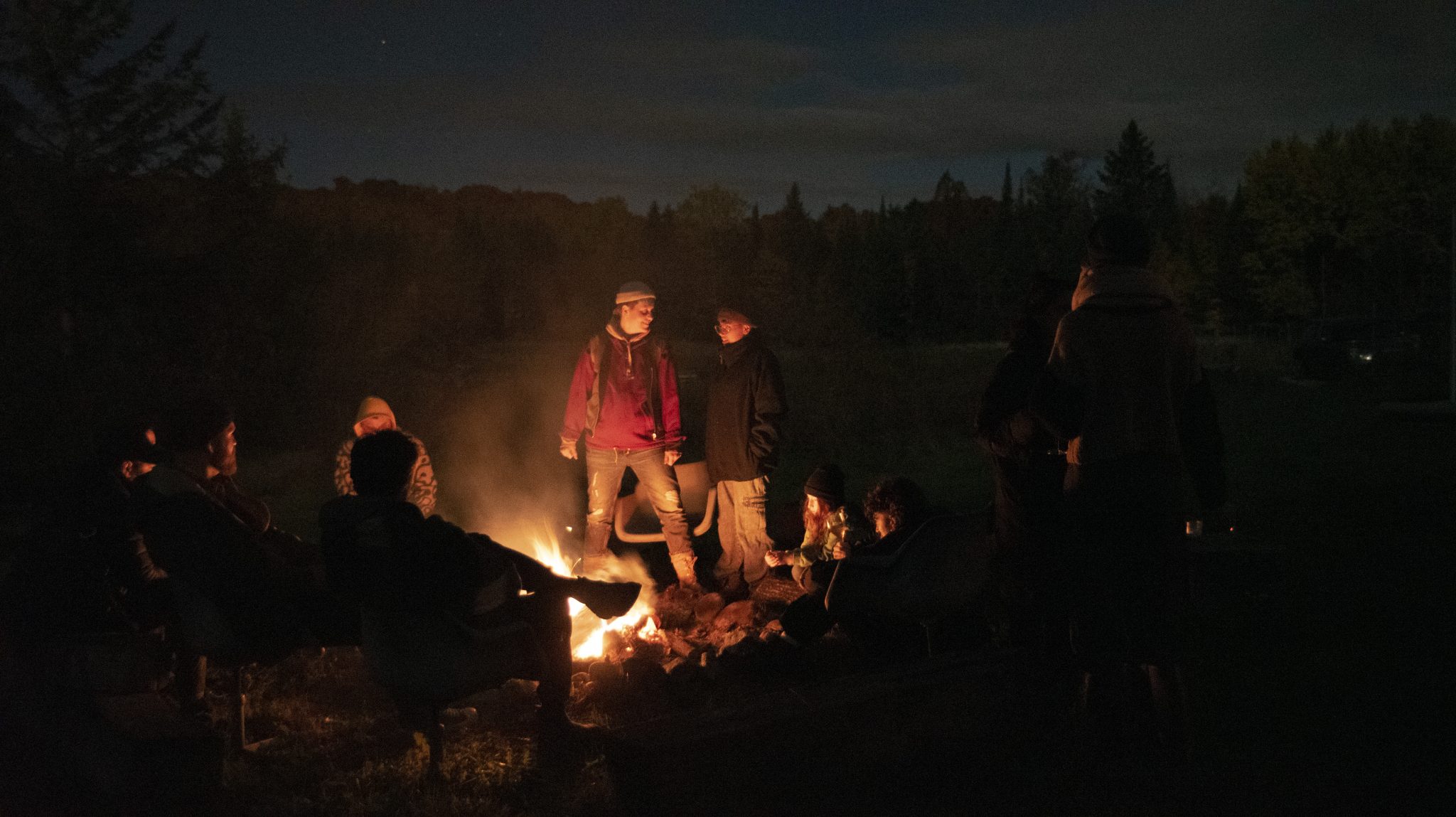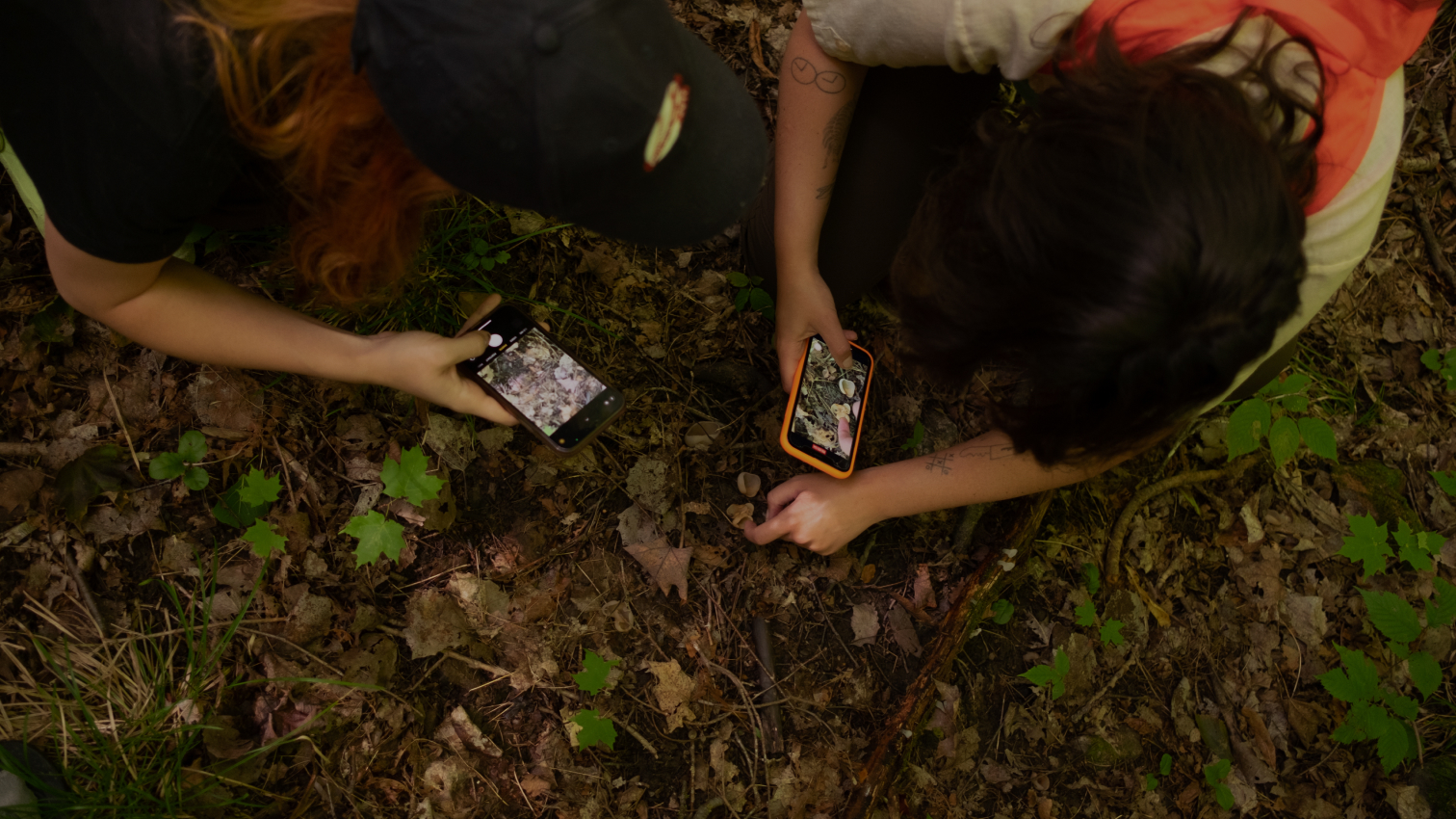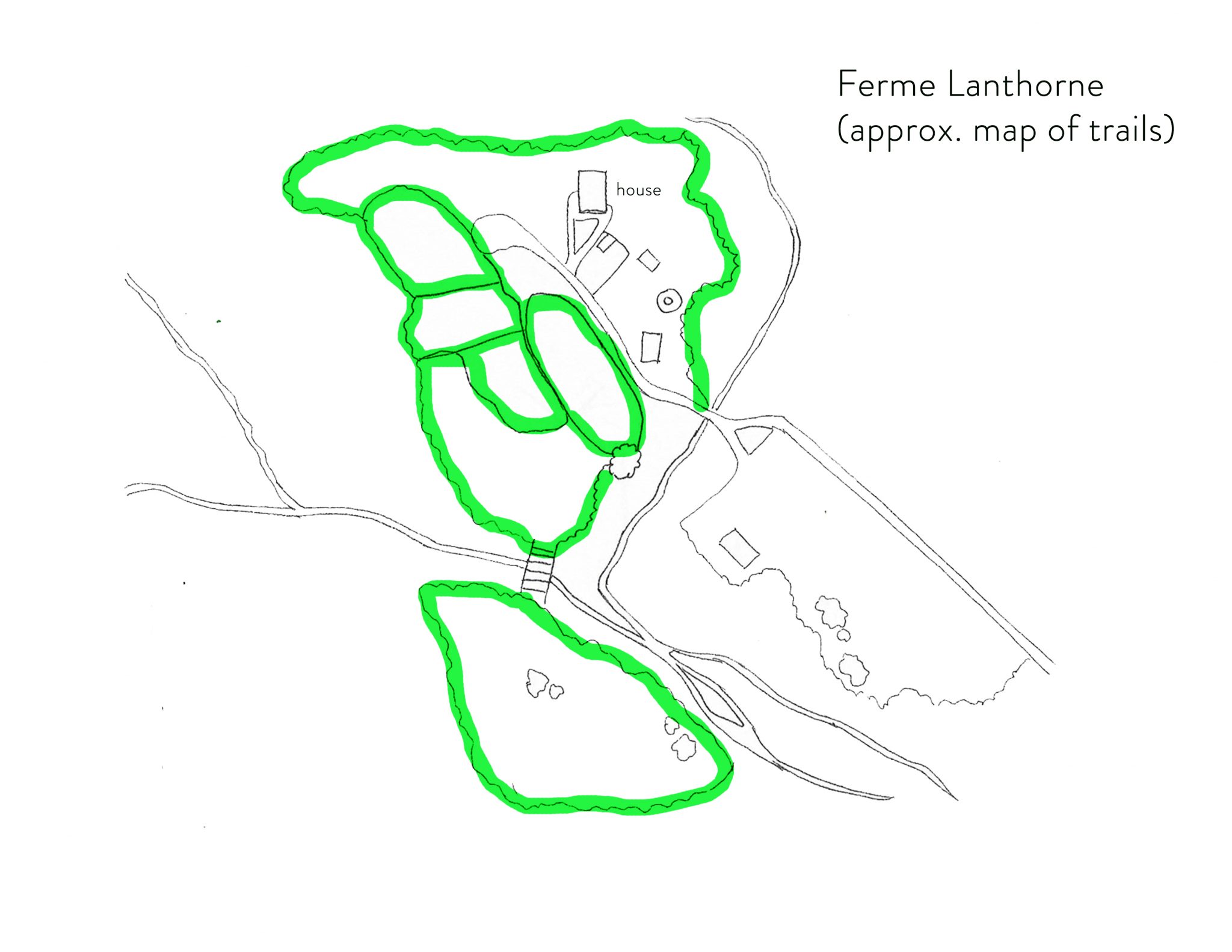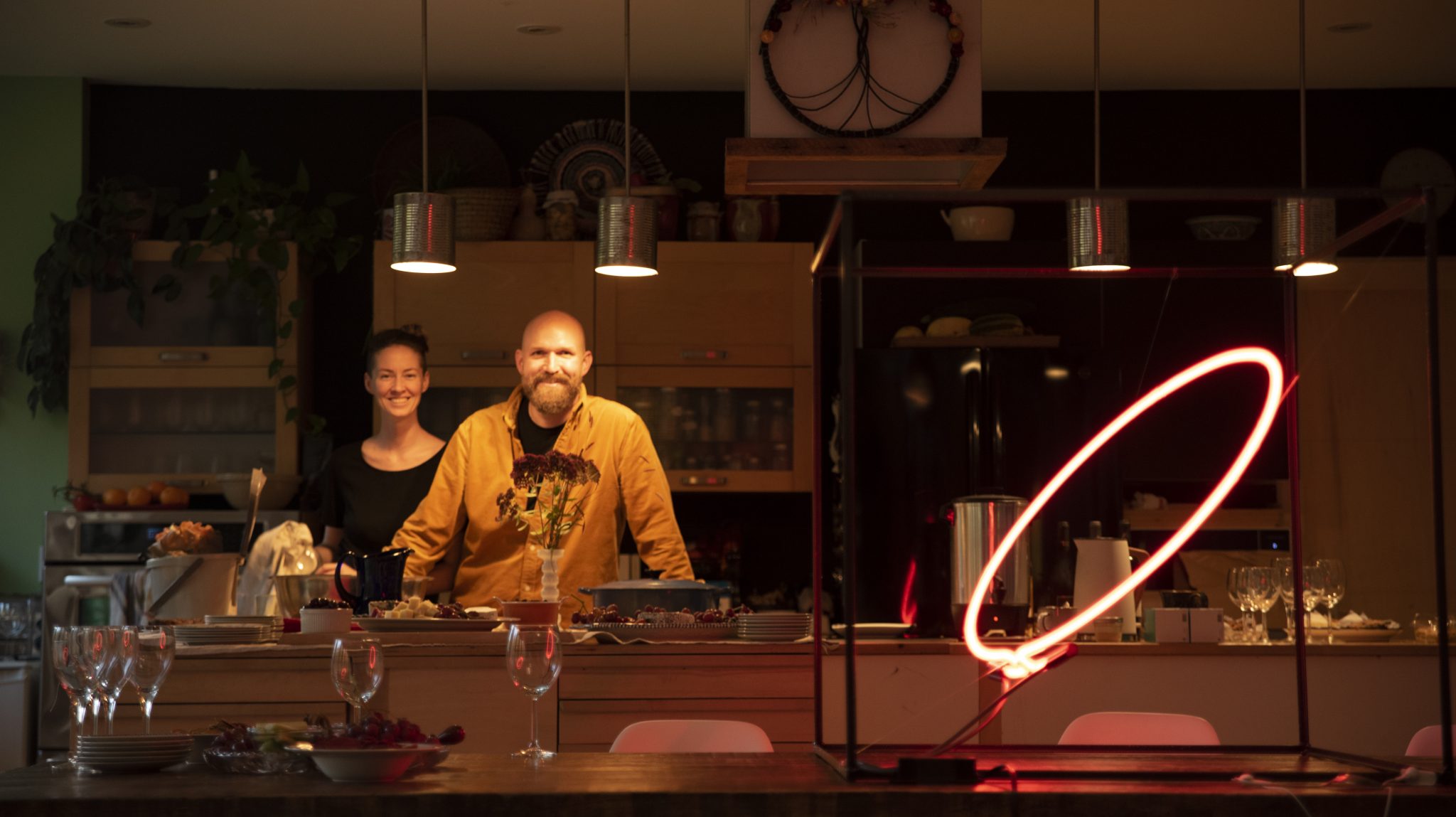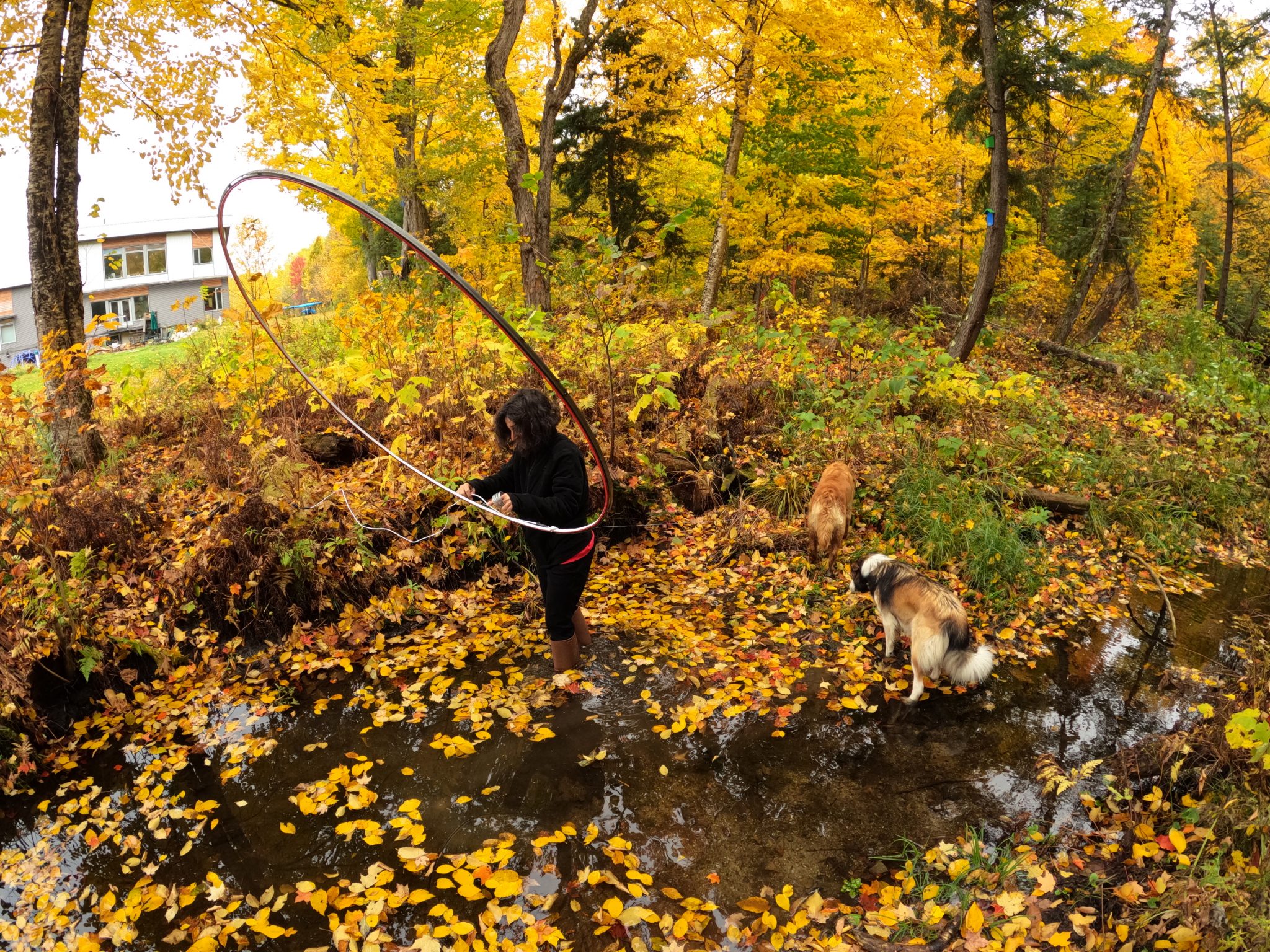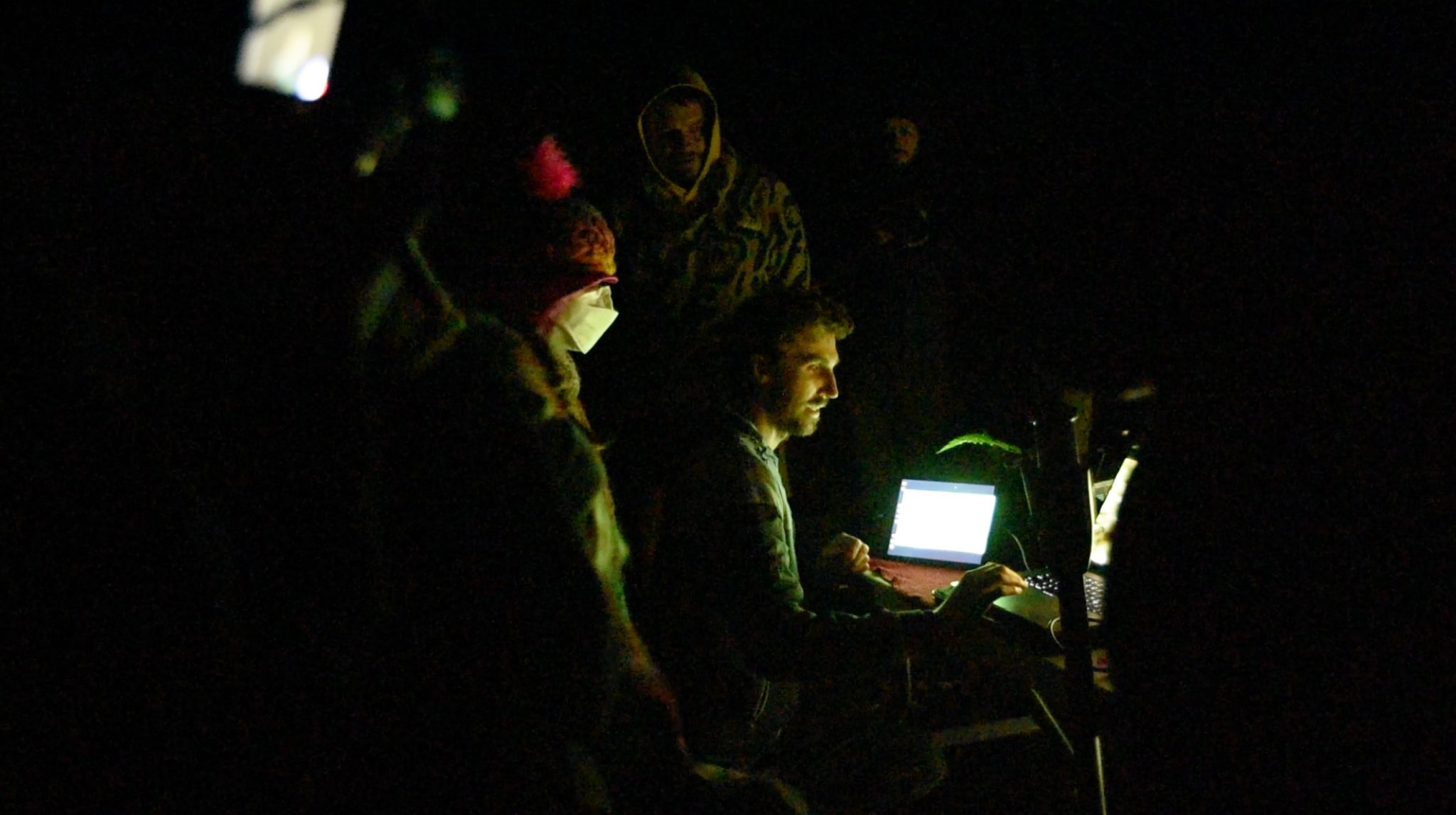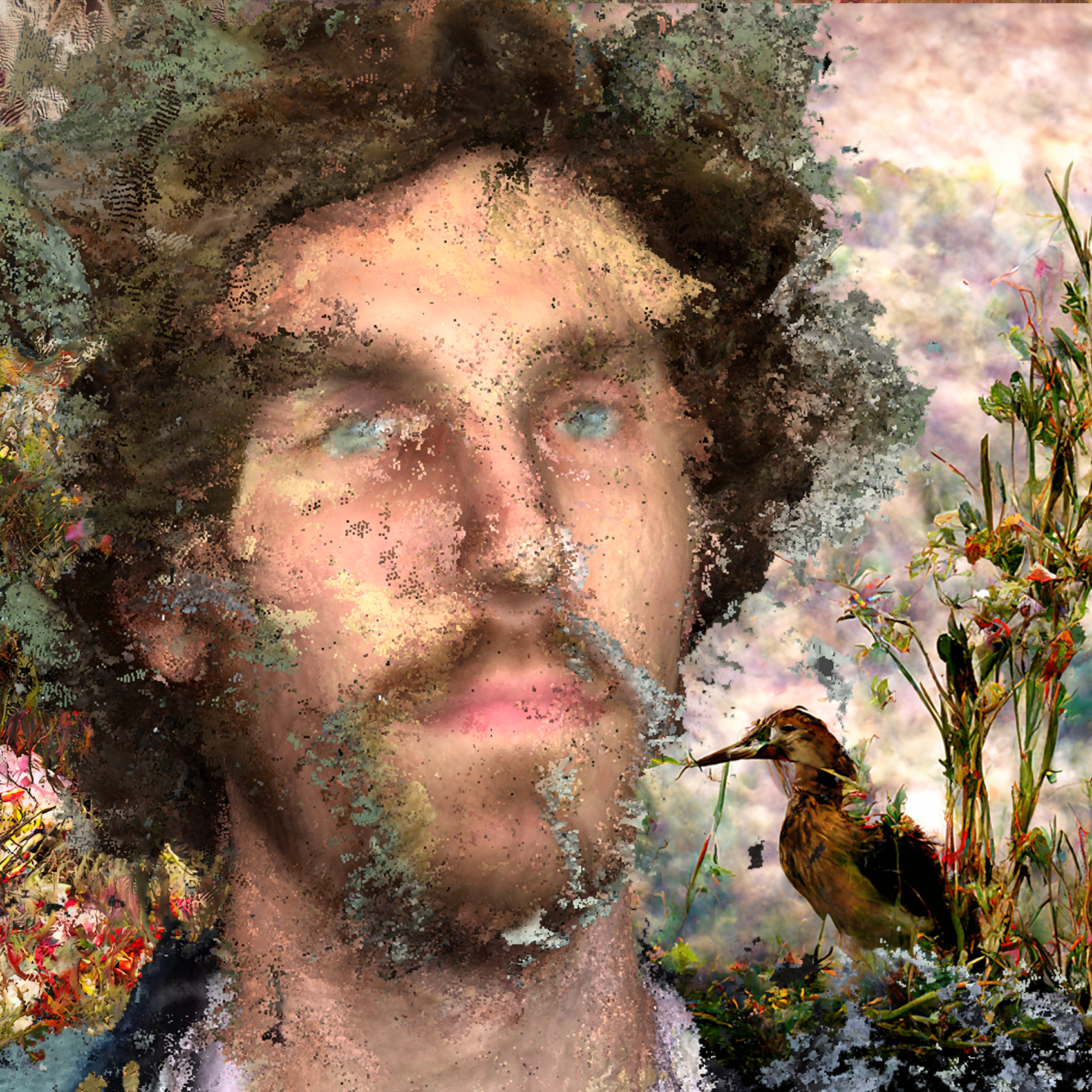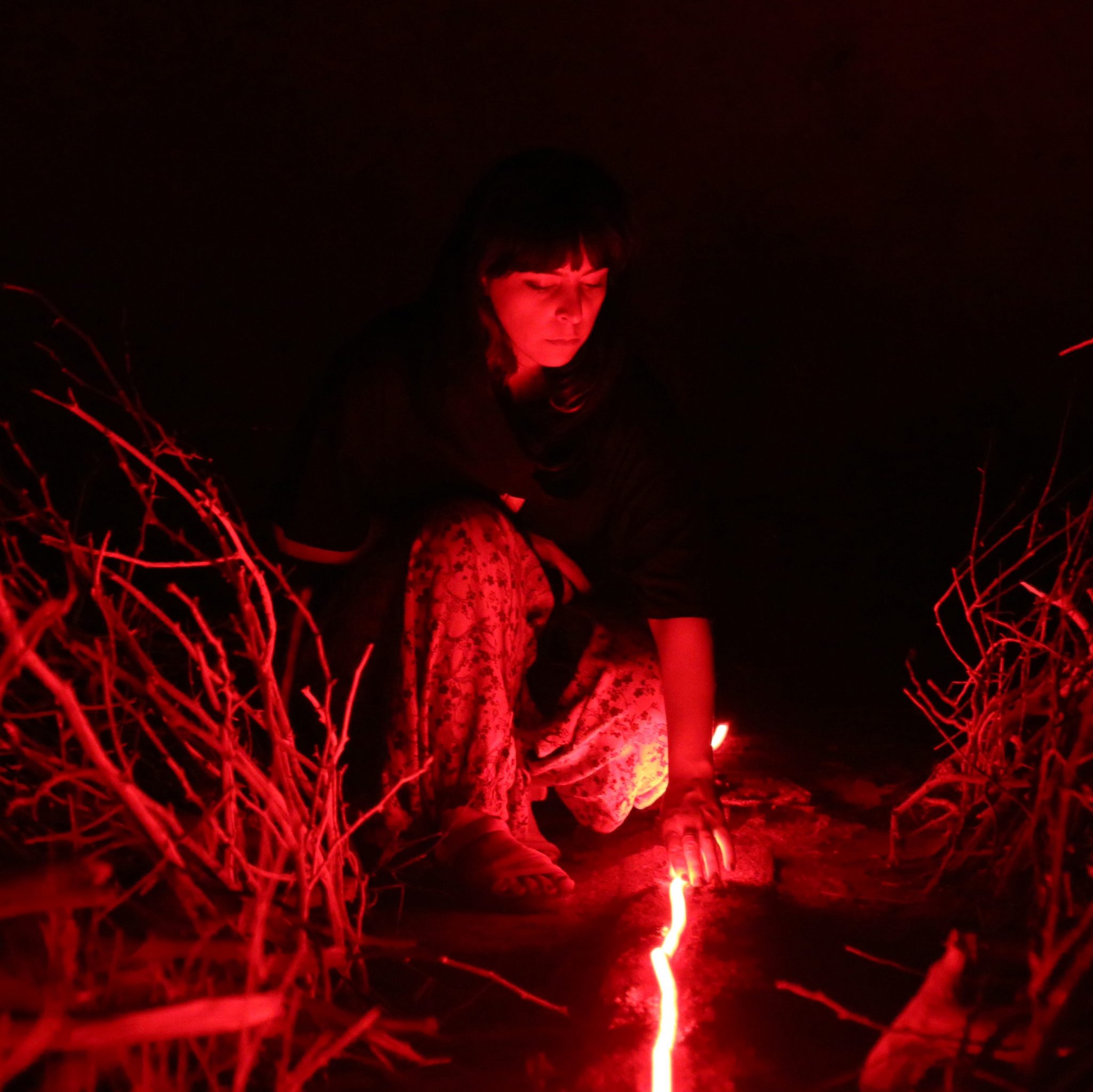Intelligent Terrain
Overview
UKAI Projects led a land-centered residency drawing on terrain near Wakefield, Quebec. During this residency, interdisciplinary artists individually and (where safe) collectively explored cognitive technology’s relationship to land and imagined approaches that bring us into a closer relationship with our environment while working toward the preservation of our world for future generations.
Just as we inhabit our physical bodies, we inhabit landscapes and live within and from them. We have seen the impact of failing to acknowledge our entanglement with natural systems. From stone tablets to silicon chips, intelligent machines are not further away from the land than an engraved piece of stone. To varying degrees, we are organized by our landscapes, and how might land inform AI’s development and our responses to it? How might we change the focus of surveillance from monitoring and control to understanding the relationships among people and environments? How might traditional knowledge and stewardship underpin ethical AI?
According to legal scholar and member of the Chippewa of the Nawash First Nation John Borrows, in oral and visual cultures, law flows from the people and from the natural world and is reflected in the artistic and physical world. To imagine ourselves as disentangled from our landscapes creates the conditions for the evacuation of these spaces. How might an ethic of stewardship, centered in natural environments, suggest developmental pathways for AI and responses to its excesses?
UKAI Projects led a land-centered residency drawing on terrain near Wakefield, Quebec. During this residency, interdisciplinary artists individually and (where safe) collectively explored cognitive technology’s relationship to land and imagined approaches that bring us into a closer relationship with our environment while working toward the preservation of our world for future generations.
Most discourse tacitly or explicitly positions human beings, their relationships, and the environments they inhabit as ‘objects’ of ethical systems, algorithmic decision making, corporate action, and government regulation. Our cultural life extends from how we experience ourselves and how we experience others. AI amplifies and distorts what we actually and potentially experience.
Reimagination is possible.
Our experiences establish the ideas we can draw upon. AI has no body, no physical environment organizing its development, and no culture to weave and reweave into social life. There is no ‘dark matter’ for the machine to draw upon and our algorithmic culture is increasingly asking us to ignore our own semantic contexts. By (re)inhabiting the body, the land, and our cultures we might imagine a new ethics for algorithms and support others to appreciate the path we find ourselves on.
Land:
From the rare earth metals extracted for our devices to the displaced Rosetta Stone that helped decode a long-lost language, the modern technologies and “discoveries” organizing our lives have always been built on the exploitation of land, its materials, and the ecological contexts from which people draw meaning.
Land became property, something that can be owned and thereby exploited.
The scientific instruments that enable us to feed our curiosities were perfected and came to map and measure the world with ever more precision. When we look up at night sky, the constellations we used to draw meaning from are obstructed by a network of devices looking down at us. Every inch of the Earth is threatened with observation, surveillance and monitoring. The more we know, the more we can “own”.
Digital isn’t a new place to discover new dreams. We bring our burdens with us.
The internet is born of land, water, and the sky. The “cloud” is nothing more than 400 or so underwater cables and multiple data centers scattered across the landscape. The GPS system is a network of satellites traversing the night sky, underpinning the infrastructures for real-time maps and autonomous vehicles.
Body:
Salmon carried from the river by bears eventually become a part of the forest as their nitrogen is taken up by the trees. The bodies of fish become entangled with the landscape. Cycles of being consumed and becoming another body may seem morbid or no longer the concern of human societies. However, by distancing ourselves from these cycles, we become less able to appreciate intelligence(s) present in bodies outside of our own. Artificial intelligence is a set of systems designed without a body. It relies on precision instruments, massive datasets, and abstracted moral and ethical constraints to feel and sense the world for it.
Artificial intelligence and automated systems of our modern life are modeled on a narrow understanding of intelligence, one that does not take into account the senses of the body and the existence of the flesh. As our devices tend to serve as extensions of our bodies, to see, to sense, to interpret the world, and to make decisions for us, what signals do our devices amplify and how will they further alter our experiences of the world we inhabit?
Movement:
First, there is an exodus from the real to the digital. Then, there are migrations from platform to platform as these digital spaces become hostile, uninhabitable, or utterly unwelcoming like a shopping mall parking lot at night.
Moving around digitally, like moving around in real life, is easier for some than others. Digital borders become less and less permeable. People are simultaneously being kept out, and locked in. Exactly where can we escape to next? Migration isn’t just life on the move, but also how we make a home for ourselves and those we love and care for.
Intelligent Terrain explores the landscape of the Outaouais region. It is hosted near Wakefield, QC, in Canada, in an area formerly covered by the Champlain Sea about 130,000 years ago, before the current fluvial systems in the Ottawa valley began to form at the end of the last ice age. The Champlain Sea, once an inlet of the Atlantic Ocean, left deposits of marine life, minerals, and land forms carved out by the retreating glaciers over deeper ecological time. Through archeological excavations, we learn about land that once was sea. The deposits from the sea gave life to the ecosystems through its rich soils, and paved the way for modern agriculture’s extractions from this land. The landscape and the changes it has endured continue to organize the lives inhabiting this particular place.
Intelligent Terrain is an exercise in drawing attention to the mutilation of the natural world caused by our pursuit of scale and, through the creation of artifacts and objects of value, the commodification of what remains.
Ferme Lanthorn
Ferme Lanthorn is a regenerative farm located in Wakefield, Quebec owned and operated by Mary Ellis and Bob Labbe. The farm serves as an innovative platform for regenerative agricultural education through experiential learning programs, land based research projects and habitat conservation, while also offering artist residencies and hosting artistic exhibitions.
UKAI Projects’ programming and residency with Ferme Lanthorn contribute to how emerging technologies can be used to tell better stories of environmental regeneration in a time of great climate damage. It helps bring the discourse to people in ways that are connected to the environment they inhabit. This project draws on the entanglement of the ecology and focuses on unpacking the complex ecological and ethical implications of digital algorithmic tools and general artificial intelligence. By bringing together the intelligence of non-human species, diasporic traditions, and models of algorithmic systems derived from natural systems, this collaboration framework creates opportunities for the arts sector to contribute to urgent issues in climate change and allow cross-sectoral collaboration with technologists seeking solutions in ecological repair through new perspectives.
Intelligent Terrain 2022
Intelligent Terrain 2022 gathered 3 artists through invitation and open call to explore ways to weave material techniques into digital practices and vice-versa. The artists participated in a 3-month online research phase, a 3-day site visit, and the final 1-week installation period leading towards the community showcase in Wakefield, Quebec. The residency supported Ferme Lanthorn to see and imagine the future of their farm through the artists’ research and concept development.
Artist: Noelle Perdue
Noelle Perdue is an artist, writer, porn historian and near-mint condition collector’s item. Her work exploring digital intimacy and the blurry borders of obscenity can be found on Wired, Washington Post, Pornhub, Slate, Brazzers, et al.
As the digital world continues (desperately) to market itself as a viable alternative to the physical, new borders are being drawn over happy hours and in-office foosball sessions deep in Silicon Valley. Who-or what- is allowed to exist in this new world, and who doomed to live like a sucker in the dirt and the grass?
Artist: Dan Tapper
Dan Tapper is an artist whose work focuses on revealing hidden worlds through technology and how methods of data processing shape human experience. His work spans DIY radio astronomy – converting the electromagnetic emissions of planets and our own ionosphere into sonic installations – to generative art inspired by emergent behaviors found in nature. For the past 2 years he has been experimenting with artificial intelligence, attempting to convert his practice into a feedback loop between nature and machine.
Artist: Hooria Rahimi
Originally from Iran, Hooria Rahimi is an interdisciplinary artist currently based in Montreal, QC. Through her artistic practice, she explores human perception through the manipulation of light and reflection in space with a sense of nature and science. By working primarily with light in different forms along with other translucent materials such as mirror and optical glass, Hooria transforms the appearance of a space and bends the reality into something illusory. Her artworks address the major environmental and social issues that the world and humans are struggling with today. Interactivity is an important part of her practice; has led her to create immersive installation arts during the past years with a focus on spectatorship. She holds a Bachelor of Fine Arts with a concentration in Sculpture from the Art University of Tehran and is currently pursuing her Master of Fine Arts in Intermedia at Concordia University. She is an artist-in-residence at Poetic Societies in Detroit, MA since 2018 and has participated in several group exhibitions in Iran and recently in Canada.
This project is generously supported by:
